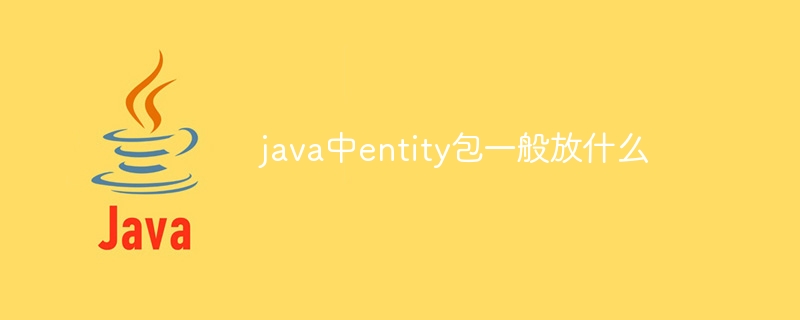Home >Java >javaTutorial >What is generally placed in the entity package in Java?
What is generally placed in the entity package in Java?
- 下次还敢Original
- 2024-05-07 02:30:25768browse
In Java, the entity package is used to store model objects related to business logic, which represent real-world entities such as users, products, or orders. Their functions include: defining the object model that maps to the database. Provides integration with persistence frameworks. Implement business logic. Encapsulate data and behavior.

The purpose of the entity package in Java
In Java, the entity package is usually used to store business logic related model object. These objects represent real-world entities such as users, products, or orders.
Function of the Entity package:
- Define the object model mapped to the database: The objects in the entity package act as data transfer objects ( DTO) to convert data between Java code and database.
- Provides integration with persistence frameworks: These objects are typically integrated with a persistence framework (such as Hibernate or JPA), allowing them to interact with the database.
- Implementing business logic: Entity objects can contain methods for implementing business rules, calculations, or validations.
- Encapsulating data and behavior: The entity package encapsulates data and the behavior associated with it in an object, improving the maintainability and readability of the code.
Typical content of Entity package:
- Model class: A class representing a business entity, including properties and methods.
- DTO Class: Class used to transfer data between different layers (for example, service layer and data layer).
- Mapping class: Specify the mapping between entity objects and database tables.
- Warehouse Interface: Defines methods for interacting with persistent storage.
The above is the detailed content of What is generally placed in the entity package in Java?. For more information, please follow other related articles on the PHP Chinese website!

